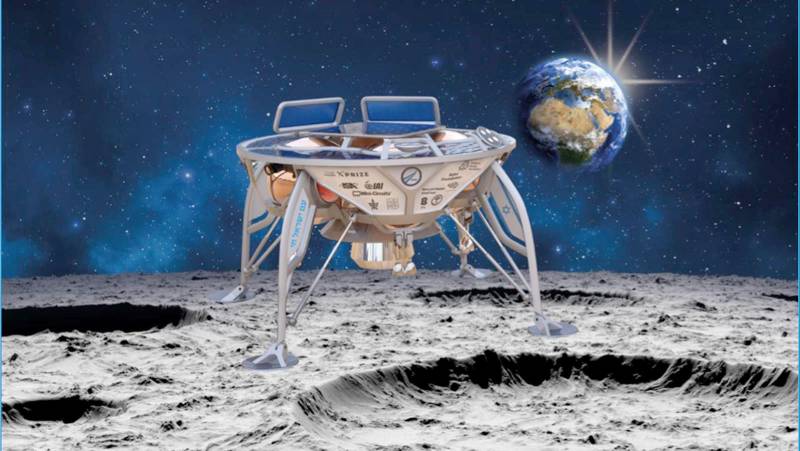A step closer to its historic moonshot, a private lunar lander has made progress.
Yesterday, January 31, the robotic Nova-C spacecraft got prepared for liftoff by being enclosed inside the payload fairing of its SpaceX Falcon 9 rocket.
In a call with reporters this afternoon, Trent Martin, vice president for space systems at the Houston-based Intuitive Machines—the company that manufactured the lander—stated, “As our combined teams closed the two fairing halves, I saw the lunar lander for the last time on Earth.”
If all goes as planned, the launch, from Florida’s Space Coast’s Cape Canaveral Space Force Station, would take place over the course of three days in the middle of February. Although Martin stated today that Nova-C’s lunar landing attempt will occur on February 22, regardless of the day it launches, SpaceX and Intuitive Machines have not yet disclosed those dates.
In the event that launch is not possible in February, there will be another chance in March.
The next mission, called IM-1, aims to land Nova-C close to Malapert A, an impact crater located 10 degrees latitude from the moon’s south pole. Scientists and advocates of exploration are very interested in the area since it is believed to contain substantial amounts of water ice.
Six NASA science instruments are being carried by IM-1’s Nova-C lander, which Intuitive Machines christened Odysseus, through the agency’s Commercial Lunar Payload Services programme, or CLPS for short. In order to help collect scientific data that will open the door for a permanent human presence on and around the moon—something NASA is aiming to achieve with its Artemis program—CLPS intends to utilise private robotic landers.
The NASA instruments aboard IM-1 include a laser-based descent and landing sensor, a camera system intended to record the plume formed by Odysseus’s lunar landing in exquisite detail, and a novel kind of “space-age fuel gauge,” which will employ sensors to determine how much propellant remains in the lander’s tanks — a difficult undertaking in the microgravity environment.
“Future spaceflight missions using cryogenic propellants can potentially take the guesswork out of monitoring propellant reserves and save fuel by using this technology,” Debra Needham, program scientist in the Exploration Science Strategy and Integration Office at NASA headquarters, said in today’s briefing.
Additionally, Odysseus is transporting six commercial payloads for various clients aboard IM-1.
It won’t be Nova-C that launches as the first lunar lander with CLPS help. That honour went to the Peregrine spacecraft from Astrobotic, which took off on the first flight of United Launch Alliance’s new Vulcan Centaur rocket on January 8.
Peregrine experienced an awful fuel leak soon after deployment from the rocket’s upper stage, but Vulcan Centaur executed perfectly. After ten days of operation in outer space, the lander’s operators were able to guide it towards a controlled explosion on January 18 in Earth’s atmosphere.
To enable Odysseus to accomplish the first-ever successful lunar landing on a private spacecraft. Success would keep the moon milestones coming; on January 19, the robotic SLIM lander made it to the moon after a rough landing attempt; this made Japan the fifth nation to send a probe to the moon. The Soviet Union, the US, China, and India are the other four countries.
- Cannes Film Festival Lineup 2025: Livestream Details & How To Watch - April 10, 2025
- Masters 2025: How to Watch Golf Tournament Live for Free on TV & Online - April 10, 2025
- Amazon Delays Kuiper Internet Satellite Launch Over Bad Weather - April 10, 2025





